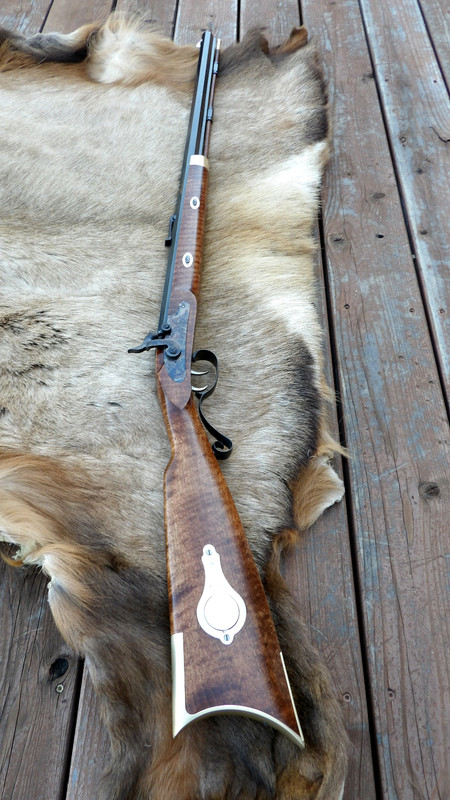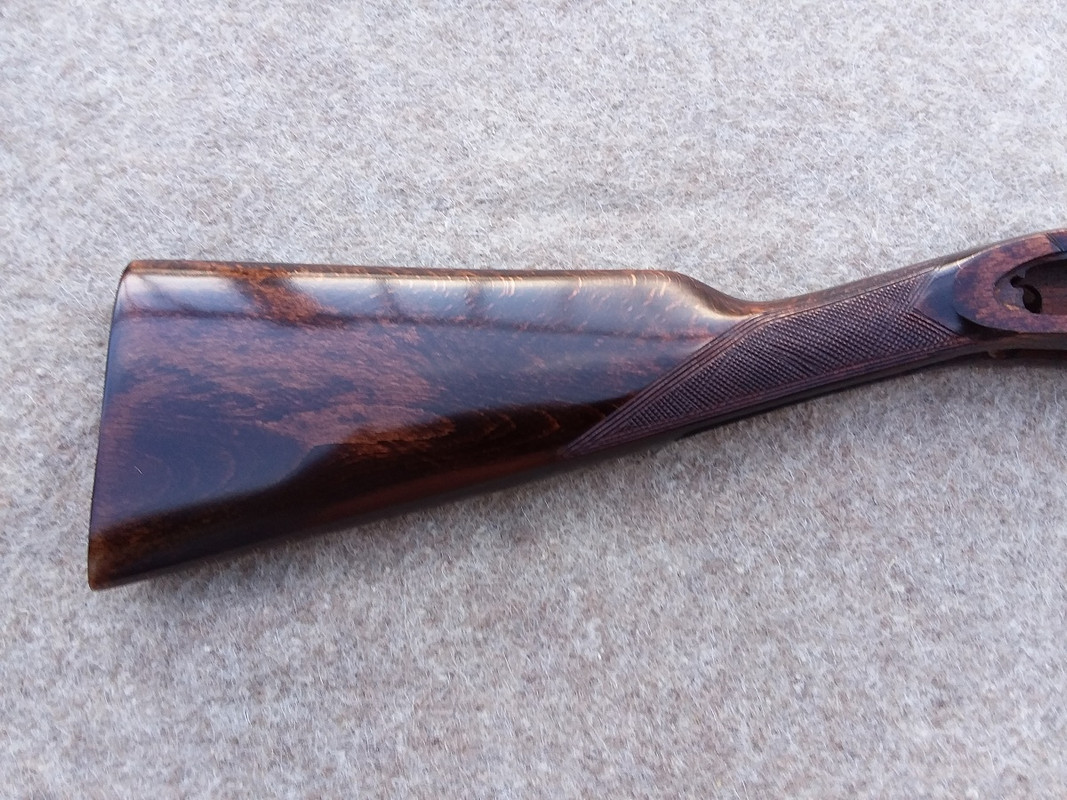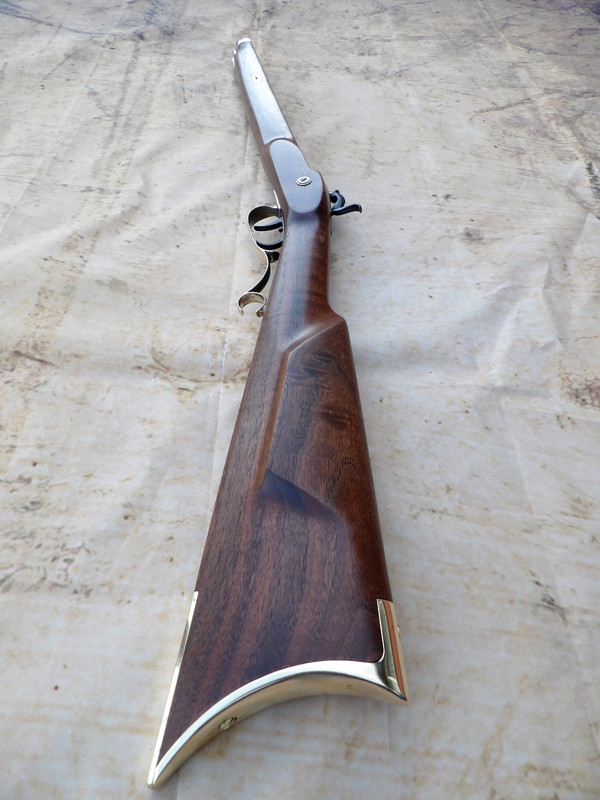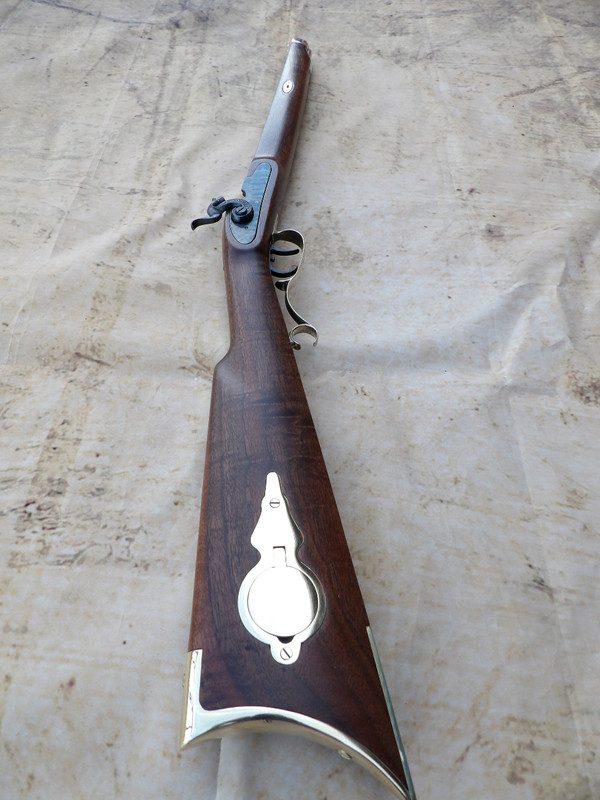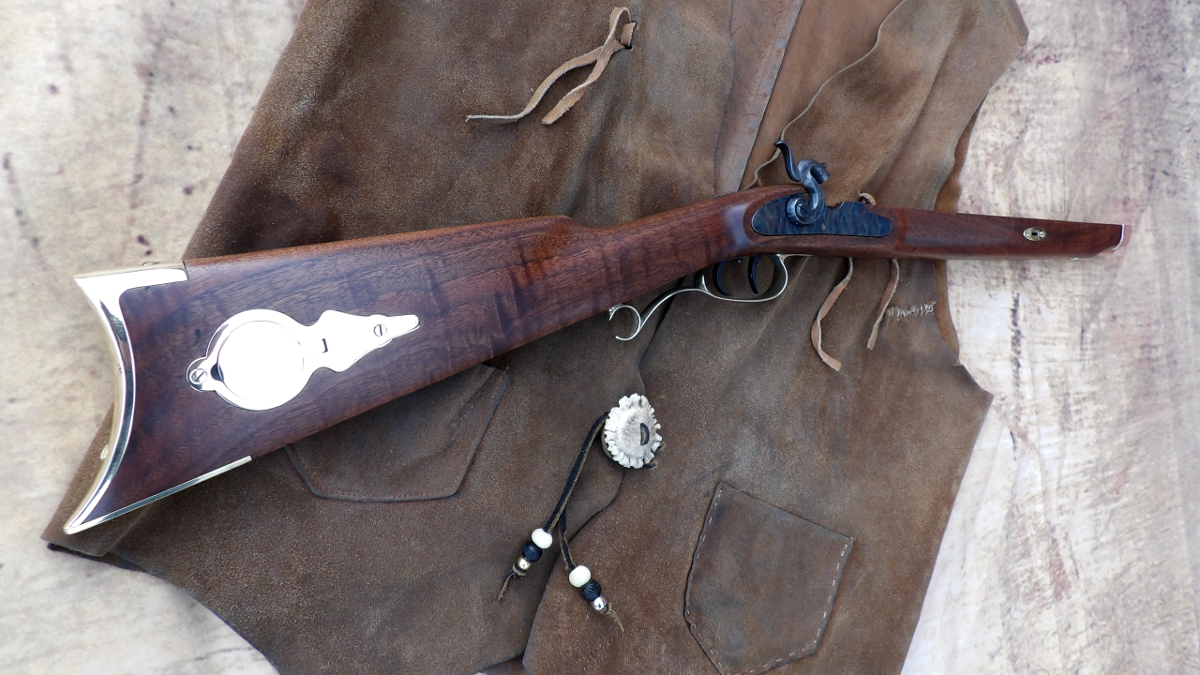I love the older CVA Hawken flintlock I recently bought but the stock is not as pretty as I'd like. The brown barrel, the lock, and everything else, except for the butt plate, which I have a replacement for, is fine.
I want to refinish the stock, but I'm unsure how to start. I suppose the first step is to remove the old finish. Should I use fine paper to remove the existing color without changing the contours of the wood? Then proceed with my choice (walnut) of stain. I've read about finishing stocks, but the removal of the old finish is what I'm nervous about. I don't want to do anything wrong. Here's a couple of pics of the stock as is.


See what I mean?
Zonie recently posted a pic of a shotgun with the color that I would love to have on it. Thanks Zonie. Hope you don't mind if I use your pic again.

I want to refinish the stock, but I'm unsure how to start. I suppose the first step is to remove the old finish. Should I use fine paper to remove the existing color without changing the contours of the wood? Then proceed with my choice (walnut) of stain. I've read about finishing stocks, but the removal of the old finish is what I'm nervous about. I don't want to do anything wrong. Here's a couple of pics of the stock as is.


See what I mean?
Zonie recently posted a pic of a shotgun with the color that I would love to have on it. Thanks Zonie. Hope you don't mind if I use your pic again.
Last edited:








